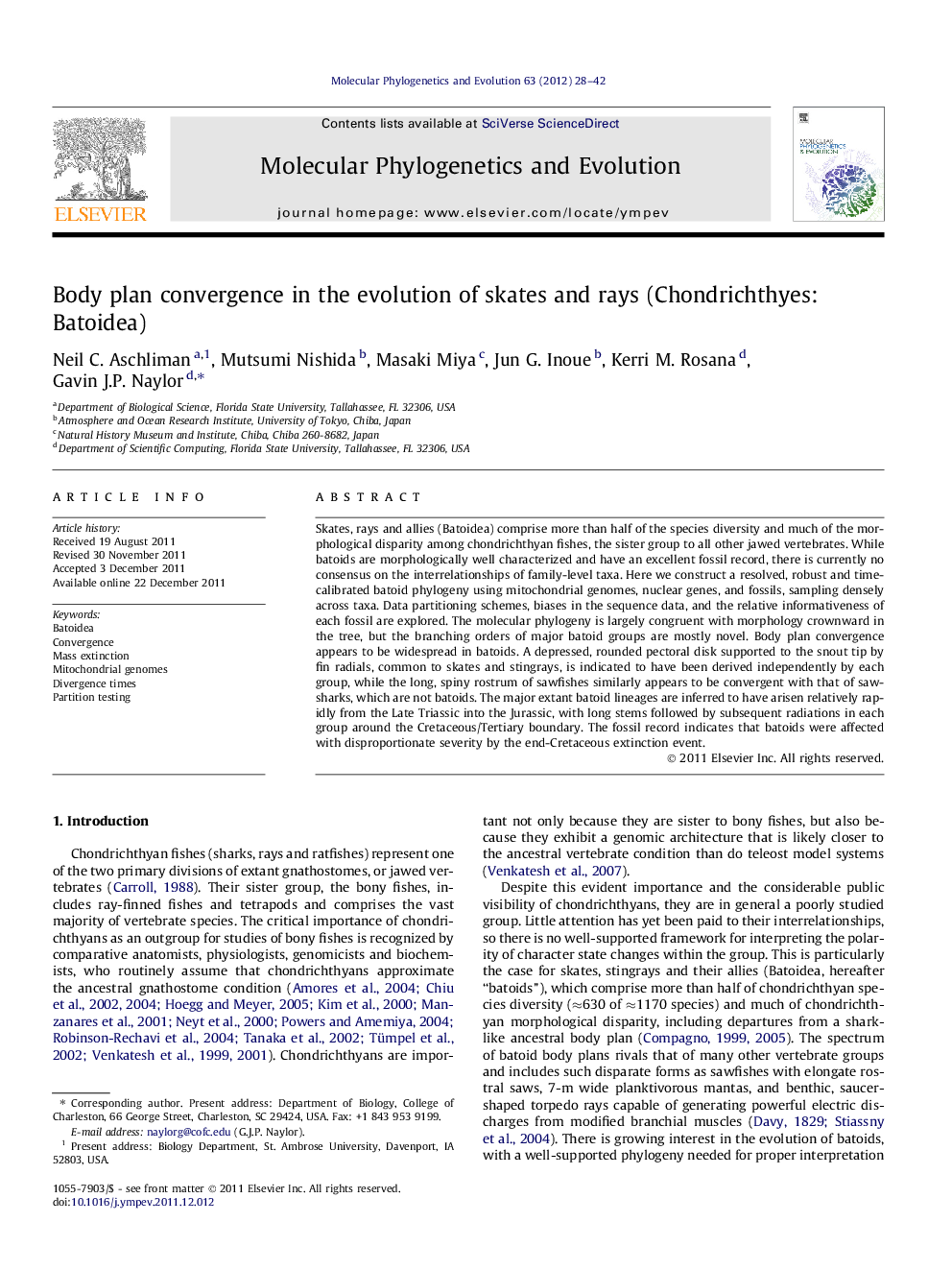| کد مقاله | کد نشریه | سال انتشار | مقاله انگلیسی | نسخه تمام متن |
|---|---|---|---|---|
| 2834162 | 1164296 | 2012 | 15 صفحه PDF | دانلود رایگان |

Skates, rays and allies (Batoidea) comprise more than half of the species diversity and much of the morphological disparity among chondrichthyan fishes, the sister group to all other jawed vertebrates. While batoids are morphologically well characterized and have an excellent fossil record, there is currently no consensus on the interrelationships of family-level taxa. Here we construct a resolved, robust and time-calibrated batoid phylogeny using mitochondrial genomes, nuclear genes, and fossils, sampling densely across taxa. Data partitioning schemes, biases in the sequence data, and the relative informativeness of each fossil are explored. The molecular phylogeny is largely congruent with morphology crownward in the tree, but the branching orders of major batoid groups are mostly novel. Body plan convergence appears to be widespread in batoids. A depressed, rounded pectoral disk supported to the snout tip by fin radials, common to skates and stingrays, is indicated to have been derived independently by each group, while the long, spiny rostrum of sawfishes similarly appears to be convergent with that of sawsharks, which are not batoids. The major extant batoid lineages are inferred to have arisen relatively rapidly from the Late Triassic into the Jurassic, with long stems followed by subsequent radiations in each group around the Cretaceous/Tertiary boundary. The fossil record indicates that batoids were affected with disproportionate severity by the end-Cretaceous extinction event.
Figure optionsDownload as PowerPoint slideHighlights
► Reciprocal monophyly of batoids and sharks is strongly supported.
► Branching orders of major groups are mostly novel; tip resolution is congruent with morphology.
► The depressed, undulatory body plans of skates and stingrays are indicated to be convergent.
► Major batoid lineages arose relatively rapidly from the Late Triassic into the Jurassic.
► Batoid standing diversity linked to crown radiations near the Cretaceous/Tertiary boundary.
Journal: Molecular Phylogenetics and Evolution - Volume 63, Issue 1, April 2012, Pages 28–42